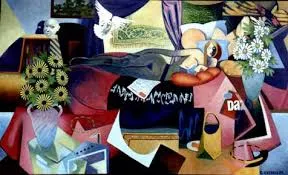Stuckism: A Rejection of Conceptualism in Favor of Traditional Painting
The Genesis of Stuckism
The term "Stuckism" derives from an insult directed at Billy Childish by his ex-girlfriend, Tracey Emin, who told him that his art was "stuck". Instead of taking offense, Childish and Thomson embraced the term, using it to spark a movement that now includes over 200 affiliated groups worldwide. The founders crafted the Stuckists' manifesto, advocating for painting as a medium and criticizing the contemporary art world's emphasis on novelty over skill and emotional engagement.
Core Principles of Stuckism
- Pro-Painting: Stuckism's fundamental principle is a vigorous advocacy for painting, particularly figurative painting, as a form of personal and spiritual expression. Stuckists argue that art should come from the heart and soul, not just the brain.
- Anti-Conceptualism: The movement is vehemently opposed to what it perceives as the pretentiousness of conceptual art, which Stuckists believe often lacks emotional depth. They criticize major contemporary art institutions, such as the Turner Prize, for promoting conceptual art at the expense of traditional craftsmanship.
- Emotional Authenticity: Stuckism encourages the expression of personal emotions and experiences, often through direct and uncomplicated imagery. Stuckists view art as a therapeutic and communicative process, emphasizing honesty and self-exploration.
- Critical of Art Elitism: The movement opposes the elitism of the art world, advocating for a more inclusive understanding of art that welcomes and values all forms of artistic expression, particularly those that are often dismissed by mainstream art critics.
Notable Stuckists and Their Works
Billy Childish, despite having left the movement, remains one of the most influential figures in Stuckism. His raw, autobiographical paintings set a standard for emotional honesty in the movement. Charles Thomson, co-founder, continues to be a vocal advocate for Stuckism, organizing exhibitions and promoting Stuckist theory. Ella Guru and Paul Harvey are other notable Stuckists whose works exemplify the movement’s ethos, characterized by vibrant, narrative-driven paintings that challenge contemporary art norms.
Stuckism in the Contemporary Context
Despite being over two decades old, Stuckism continues to resonate in an art world increasingly dominated by digital media and conceptual installations. The movement's call for a return to traditional skills and emotional authenticity strikes a chord with those who feel alienated by the impersonal nature of much contemporary art.
Conclusion
Stuckism is not just an artistic movement; it is a philosophy that questions the very foundations of contemporary art criticism and practice. By championing traditional painting and emotional sincerity, Stuckists provide a critical reflection on what is valued in art and why. As we move forward, the dialogue between traditional and conceptual forms of art will undoubtedly continue, with Stuckism playing a crucial role in this ongoing discourse. Whether one agrees with the Stuckist perspective or not, its impact on the conversation about the purpose and direction of art is undeniable.

